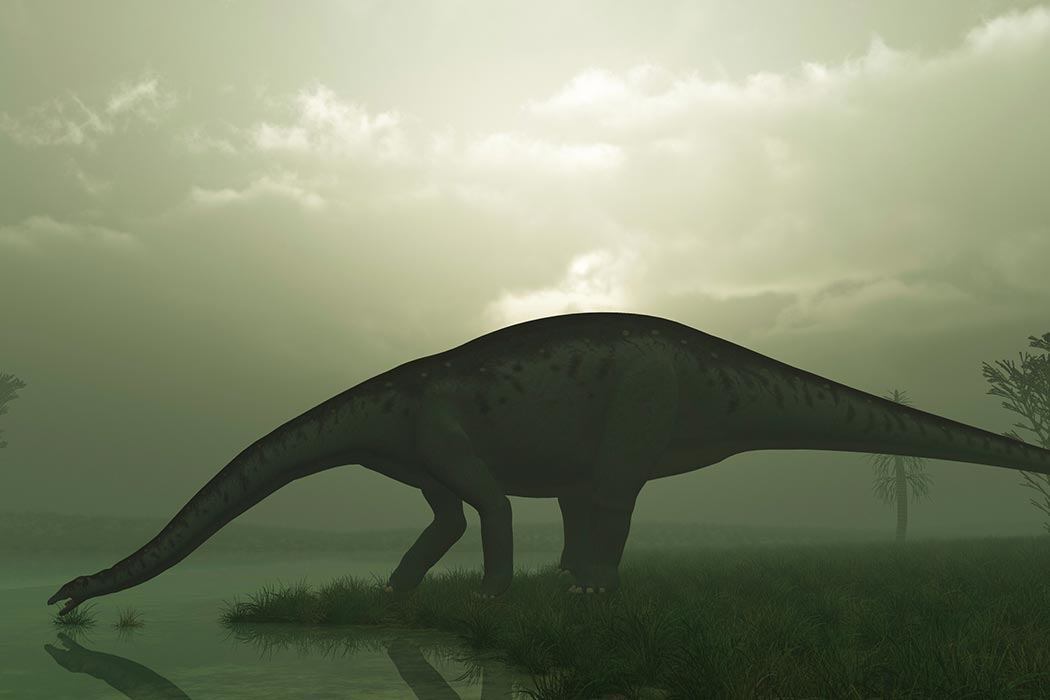Move over Chuck Yeager, the Apatosaurus might have been able to crack its tail at supersonic speeds like a bullwhip, according to a reconstruction. The massive Apatosaurus roamed North America during the late Jurassic Period, approx. 163-145 million years ago. Sauropods, as the long-necked dinosaurs are known, were some of the largest land animals ever, averaging around 75 feet long and weighing up to 17 metric tons. Their long necks may be the most noticeable feature, but their tails, often overlooked, are extremely fascinating.
Nathan Myhrvold, the former Chief Technology Officer at Microsoft and co-founder of Intellectual Ventures, has actually been studying their supersonic tails since 1997. Myhrvold originally built a computer model to test the movements of the tail, and concluded that the very tip of the tail could achieve supersonic speeds. Recognizing the enormous stress such speeds would generate, Myhrvold proposed that the tip of the tail had extra skin on it, and while this skin would suffer damage, it could be continually regrown. However, no evidence of this skin tip has been provided and so it remains pure speculation.
Why would the Apatosaurus have needed a supersonic tail? In this case, the bullwhip analogy is apt, as a “whiplash” tail is actually an informal term used to classify the long, narrow version of the sauropod tail, according to paleontologist Paul Upchurch. Before Myhrvold’s model, paleontologists concluded that sauropods probably used their tails as weapons. Tails were further classified into two types; some, such as Shunosaurus, had a tail ending in a club made of fused, ossified vertebrae, while others such as the Apatosaurus had a long, skinny “whiplash” tail. The chevron bones under the tail forked in both varieties, suggesting that these bones evolved to protect the nerves and blood vessels.
While the club variety was almost certainly a weapon, Myhrvold’s research reconsidered the idea of whether the whiplash tail served a similar purpose. Myhrvold calculated that high speed contact of the narrow tail with another animal would probably do as much damage to the tail as to its target. Furthermore, anything large enough to challenge an Apatosaurus might not be deterred by a mere whipping. There are other reasons why the blood vessels of the tail would need protection beyond fighting—the obvious one being to help push off from the ground. Myhrvold proposes that the point of cracking the tail was to make a loud noise, perhaps for courtship or as an intimidation tactic.
Of course, the current research is based on a reconstruction of an Apatosaurus tail, which is not the same as a living Apatosaurus. There is no way to be certain if the tail could truly crack like a whip. Even without supersonic speeds, the tail could probably still make an impressive noise, perhaps when smacked against water. Supersonic or not, when the Apatosaurus swung its tail, other dinosaurs probably took notice.







